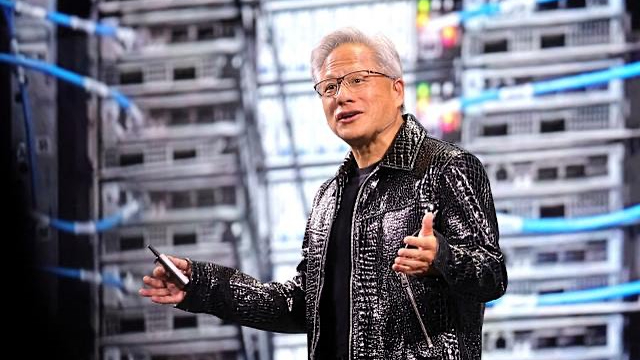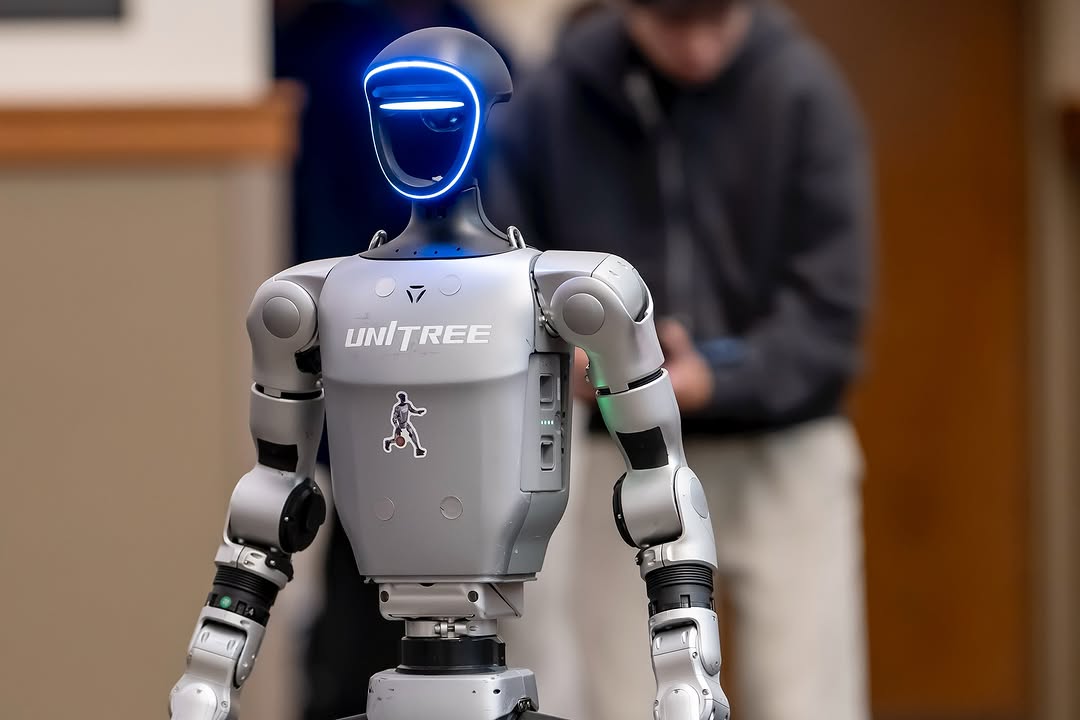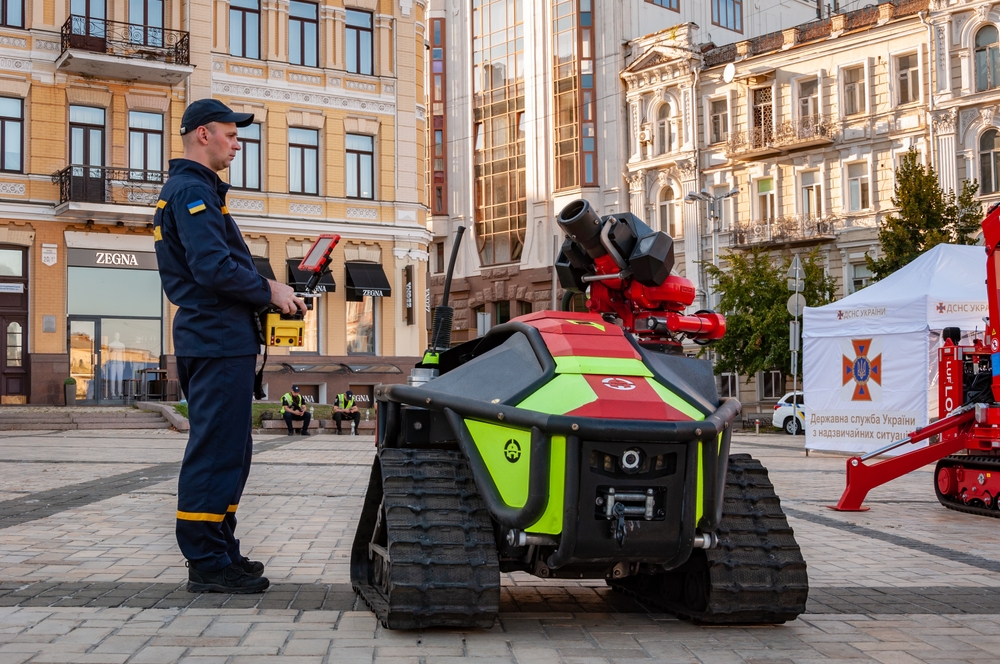The Rise of Military Robotics: Navigating the Autonomous Battlefield
As robotics technology advances at a breakneck pace, governments and private companies are aggressively exploring its military potential. From miniature reconnaissance drones to multi-limbed robots capable of traversing treacherous terrain and even carrying versatile payloads, machines are increasingly being tested for roles once exclusively reserved for human soldiers.
Companies like China's Unitree Robotics, known for their cutting-edge quadruped bots like the Go2 and the versatile humanoid H1 and G1 (Iron-Fist series), are at the forefront of this evolution. While Unitree's core focus remains civilian applications—logistics, industrial inspections, surveillance, and entertainment—their machines' robust, agile builds, and advanced autonomy capabilities inevitably raise questions about their dual-use potential and how easily these platforms could be adapted for warfare. This blurring of lines underscores a pivotal moment in the future of conflict, as we've explored in our recent piece, "Robot Rumble: How Unitree's Iron-Fist Bots Are Shaking Up the Robotics World."
A Founder's Pragmatic Vision Shapes a New Robotics Paradigm
At the very core of Unitree's meteoric rise is Wang Xingxing, a robotics visionary and entrepreneur whose journey began not in a well-funded research lab, but with a deeply hands-on, budget-conscious approach. Born in 1990 in Ningbo, Zhejiang, Wang's early fascination with robots led him to build his first bipedal prototype as an engineering student at Zhejiang Sci-Tech University using basic tools and scavenged parts, spending a mere 200 Chinese Yuan (around US$30). This early struggle with limited resources profoundly shaped his philosophy: that high-performance robotics could and should be affordable and accessible.
Wang's early prototypes, with their surprisingly playful and organic movements, quickly gained recognition online, signaling a fresh perspective in the field. Despite facing academic hurdles with English, Wang's relentless drive saw him devour over 100 STEM books, deepening his understanding of AI and mechanics. After a brief stint at drone giant DJI, the viral success of his quadruped prototype, "XDog," coupled with crucial angel funding, propelled him to found Unitree Robotics in 2016. His audacious vision remains: robotic mobility should be as common and impactful as smartphones. This drives Unitree's mission to create intelligent, affordable robots, democratizing access to advanced robotics for diverse commercial and, eventually, even personal use cases – a vast market segment previously neglected by firms focused solely on high-cost military or niche industrial applications. Indeed, as NVIDIA CEO Jensen Huang recently declared, the 2020s are set to be the "robot decade," with AI-driven machines poised to reshape industries.

The Unitree Edge: Affordable Innovation Through Deep Engineering
Where many robotics firms chase bleeding-edge performance without significant cost constraints, Unitree takes a distinct route. They combine precision engineering with highly scalable, efficient manufacturing processes primarily within China. This is underpinned by Unitree's fully self-researched core components, including proprietary high-performance motors (like the GO-M8010-6, known for its high torque and integrated FOC control algorithms), custom reducers, and advanced, real-time control algorithms. This integrated approach allows them to achieve remarkable capabilities at a fraction of the cost of competitors.
Their diverse range of robots, including the versatile Go1 and Go2 quadruped series, the robust B1 and B2, and the agile humanoid H1 and G1 (Iron-Fist), have already demonstrated surprising versatility across various real-world applications:
- Warehouse logistics & Smart Factories: Automating tasks like inventory management, material transport, and even mobile manipulation in facilities, seen in operations at companies like Amazon or advanced automotive manufacturing plants.
- Search-and-rescue & Public Safety: Navigating challenging terrain and providing situational awareness to assist first responders in disaster zones or dangerous environments.
- Industrial Inspection: Performing detailed inspections in hazardous or hard-to-reach industrial settings, offering enhanced safety and efficiency for sectors like energy and infrastructure.
More recent releases, particularly the Iron-Fist bots, signal the company’s intent to expand into even more rugged, high-intensity environments. These muscular machines, capable of withstanding significant force and traversing difficult terrain with unprecedented agility, are already being evaluated for critical roles in specialized defense training and advanced industrial tasks where human access is limited or dangerous.

Beyond Human Limits: The Tactical Allure of Autonomous Systems
Military robotics offers undeniable tactical benefits, fundamentally altering how operations are conducted. Robots don't tire, feel fear, or overtly question orders. They can:
- Navigate hazardous terrain: Remotely or autonomously traverse minefields, collapsed buildings, or chemically contaminated zones.
- Handle explosives: Safely dispose of IEDs or conduct controlled demolitions.
- Carry out high-risk missions: Conduct reconnaissance, engage targets, or provide cover in situations too dangerous for human personnel, thereby reducing casualties for friendly forces.
- Achieve superior endurance and precision: Unlike humans, machines can maintain peak performance over extended periods and execute tasks with exceptional, programmed accuracy.
These qualities make them highly desirable for defense agencies looking to minimize human exposure to harm. Major defense contractors like Lockheed Martin, Northrop Grumman, Raytheon Technologies, BAE Systems, and Israel Aerospace Industries (IAI) are heavily investing in these capabilities, developing everything from advanced drones and unmanned ground vehicles (UGVs) to robotic combat vehicles.
Unitree's Approach: Enabling Diverse Applications
Unitree's technological foundation, built on proprietary high-performance motors, advanced control algorithms, and efficient manufacturing, allows them to deliver agile, robust robots at accessible price points. But beyond hardware, their commitment to a robust robotic ecosystem is key, as we've further explored in "Inside the Lab: How Unitree Is Engineering the Future of Accessible Robotic Mobility":
- Modular Hardware: Unitree robots like the Go2 often feature accessible interfaces (e.g., Picatinny rails, mounting points) for easy attachment of third-party sensors (LiDAR, thermal cameras), manipulators, or specialized payloads, making them highly adaptable for diverse operational needs.
- User-Friendly Software (SDKs/APIs): Their comprehensive Software Development Kits (SDKs) and Application Programming Interfaces (APIs) support common languages like Python and C++. This means academic researchers, corporate developers, and even military R&D teams can quickly program the robots for specific tasks, bypassing complex low-level coding. Unitree also provides extensive documentation, simulation environments (like MuJoCo-based tools), and actively fosters an active online community, accelerating innovation.
- Cloud Integration: Some Unitree models support Over-The-Air (OTA) software updates and offer cloud integration capabilities for remote fleet management, data analytics, and AI model updates, crucial for deploying and maintaining numerous robots across vast operational areas.
This open, user-centric approach has allowed Unitree to proliferate its technology, fostering widespread adoption for tasks like warehouse logistics (e.g., in major e-commerce hubs), critical infrastructure inspection, and advanced academic research. Their capabilities are even extending to more unconventional arenas, with robots now even racing humans in events like the Beijing Half Marathon.

@ChinaMatters_
The Ethical Divide: Efficiency vs. Humanity
But with these advantages comes profound moral complexity. When decisions about life and death are delegated to machines, we risk losing the moral reflexes that define human warfare. A robot, in its current form, doesn't understand mercy, doesn't negotiate, and doesn't genuinely comprehend the context of human suffering. It simply executes instructions.
Pros of Military Robotics:
- Human lives saved: Shields soldiers from direct harm in dangerous missions.
- Reduced human burden: Alleviates battlefield fatigue, mental trauma, and the need for constant vigilance.
- Enhanced speed and precision: Machines can react faster and execute tasks with greater accuracy in certain scenarios.
- Potential long-term cost savings: After initial investment, robots may reduce personnel, training, and support costs.
Cons and Ethical Minefields:
- Loss of Meaningful Human Control: The most critical concern. As autonomy increases, questions arise about human accountability in combat. Who is responsible for an unlawful killing? The programmer? The commander? The machine itself? International discussions (like those under the UN Convention on Certain Conventional Weapons) are striving for "meaningful human control" over lethal autonomous weapons systems.
- Technical Errors & Bias: Algorithms trained on imperfect or biased data could lead to misidentification of targets, particularly in diverse or chaotic environments. A technical glitch or a successful hack by hostile actors could result in widespread, unintended civilian casualties, with no "undo" button in war. Furthermore, risks around privacy and data security are paramount, especially as surveillance robots collect vast amounts of information in sensitive areas.
- Moral Hazard & Threshold for Conflict: The reduction of human casualties might paradoxically lower the political and societal threshold for engaging in armed conflict, potentially leading to more frequent or prolonged wars. This is where the authenticity of military robotics investment comes into question—is it genuinely to save lives, or does it make conflict more palatable?
- Lack of Ethical Nuance: Robots lack the capacity for empathy, judgment, and the discernment required in complex ethical dilemmas often present in asymmetrical warfare or crowded urban environments.
The Unequal Playing Field and Looming Arms Race
One of the most controversial aspects is the deep inequality it creates between nations. Wealthy countries like the United States, China, Russia, and several European nations that can invest billions into robotics R&D gain a significant strategic advantage, potentially dominating the global stage. Less-developed nations are left vulnerable, lacking the resources to compete or defend against such advanced capabilities.
This imbalance not only threatens global peace but actively fuels a technological arms race. Countries scramble to build faster, smarter, and more autonomous machines just to keep pace, risking a destabilized international order, widening technological inequality, and creating classes of nations that are either dominant or dangerously exposed. As one defense analyst starkly put it:
"The country with the most reliable robots wins — but everyone else loses."
Job Displacement and Economic Fallout
While battlefield ethics often dominate discussions, the economic impact of military robotics is another pressing concern. Thousands of human jobs—from logistics and maintenance to training and even some front-line roles—could vanish as robots take their place. This mirrors broader concerns in industries like manufacturing and transport, where automation is already reshaping the workforce. For instance, while companies like Amazon heavily use robots in warehouses, military logistics also stands to be profoundly automated.
The transition to a robot-driven defense model would necessitate comprehensive retraining programs and robust economic support systems to ensure affected personnel aren't left behind. For many nations, particularly those with less diversified economies or fewer social safety nets, this kind of strategic foresight is a luxury they simply cannot afford.
A Cautious and Collaborative Path Forward
While robotics offers groundbreaking potential to modernize military operations and protect human lives, its pursuit must be coupled with rigorous international regulation, radical transparency, and robust oversight. Ethical frameworks need to be developed in tandem with technological advancements, not as an afterthought.
Organizations like the Campaign to Stop Killer Robots advocate for a legally binding international instrument to prohibit fully autonomous weapons. The United Nations has seen ongoing discussions (under the Convention on Certain Conventional Weapons, or CCW) on developing principles, with a growing consensus on the need for human responsibility in the loop. However, progress remains slow due to geopolitical tensions and a lack of consensus on definitions and prohibitions, particularly from nations heavily invested in AI weapons research.
Looking ahead, the next iteration of military robotics could involve highly coordinated swarms of AI-powered drones, capable of overwhelming defenses, or increasingly human-robot teaming scenarios where soldiers and machines operate in tight, symbiotic relationships, sharing situational awareness. The ethical implications of AI-powered predictive warfare, where algorithms analyze vast datasets to anticipate enemy movements, will also demand careful consideration.
The future of warfare is indeed being written in code and algorithms. Whether that future is safer, more efficient, or paradoxically far more dangerous, depends not just on the machines we build – but on the values we embed within them, and the global frameworks we establish to govern their use. The onus is on humanity to ensure that technological prowess does not outpace moral wisdom, ensuring a future where innovation serves peace, not just power.














